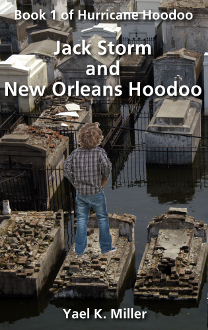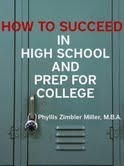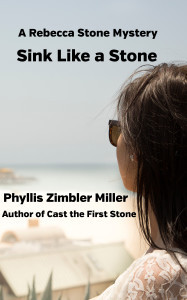Phyllis Zimbler Miller's Blog: Phyllis Zimbler Miller Author, page 15
August 26, 2015
Hurricane Katrina 10 Years Ago
In October of 2007, my daughter Yael K. Miller and I had a private tour of the remaining remnants of New Orleans’ Lower Ninth Ward, a residential area washed away by man-made mistakes that took the lives of people who had been abandoned by local authorities.
At the time Yael was researching what would become her pzmiller@gmail.com
August 21, 2015
Sex Selection in Real Life and Fiction
According to the Journal article:
Nonmedical sex selection is a controversial practice legal in only a few countries, including the U.S. and Mexico. Medical organizations and fertility specialists are split on the issue.
In THE MOTHER SIEGE, which takes place in 2049, the land mass west of the Mississippi River is controlled by the Provisional Government. There is risk-free sex — no more STDs and no more conception risks. All males are now sterilized at birth after a one-time mandatory “donation” collection for the national sperm bank.
Also in THE MOTHER SIEGE, medical costs are significantly reduced because all fertilized eggs are tested for a range of genetic diseases before implantation. Any diseases that cannot be tested before implantation or during gestation are dealt with at birth — by “eliminating” that newborn.
While now in 2015 preimplantation genetic diagnosis or PGD is being done to screen for specific inherited genetic diseases, the question of gender choice is an important one that I did not deal with in the future society of THE MOTHER SIEGE.
Currently this choice described by the Journal article is expensive, thus making it not available to a very large population.
But in my dystopian society, since all preimplantation fertilized eggs are tested, should the mothers (husbands/fathers are no longer in the picture) be able to choose the gender?
To choose or not to choose?
Thinking about this after reading the Journal article, I decided that the Provisional Government in THE MOTHER SIEGE would not allow this.
Why not?
The Provisional Government would not want to worry about an imbalance in society created by a preference for either girls or boys. And on the other hand, if the Provisional Government ever felt the need to have more of either gender, the Provisional Government’s pregnancy doctors could secretly be directed as to which gender to favor.
In conclusion, while THE MOTHER SIEGE is fiction, I suspect this topic of gender choice will have to be dealt with in real life sooner than later (especially if the cost of PGD is greatly reduced). And that may mean heated debates on this topic in the fields of ethics as well as economics among others.
Any thoughts on which side of this question you find yourself?
P.S. I’m now writing a prequel story to THE MOTHER SIEGE: THE UPHEAVAL starts 20 years earlier in 2029 when the mother protagonist of THE MOTHER SIEGE is age 16 and the world she knows changes in an instant.
Click here to read for free THE MOTHER SIEGE on Wattpad and click here to read the first chapter of THE UPHEAVAL.
© 2015 Miller Mosaic LLC
Phyllis Zimbler Miller (@ZimblerMiller) has an M.B.A. from The Wharton School and is the author of fiction and nonfiction books/ebooks, including HOW TO SUCCEED IN HIGH SCHOOL AND PREP FOR COLLEGE and the romantic suspense spy thriller CIA FALL GUY, as well as newly written books not yet published. She can be reached at pzmiller@gmail.com
August 14, 2015
Writing Books That Are More Easily Read on Smartphones
How do we write for our books to be more easily — and enjoyably — read on smartphones?
While the WSJ article talks about disruptions while reading on smartphones, for many people that can be the normal reading experience even when reading a print book. What I think is important for those of us who are writers is to consider our reading audience today — an audience that often has fragmented attention wherever they are reading our books.
For writers the basic starting point may be how to keep our readers clear on information mentioned earlier. (Even when reading a long newspaper article in print or on the screen I often have to go back to find the earlier reference of who this person is who is being quoted later in the article.)
This is an important goal as people who get “lost” in their reading are probably much more likely to stop reading that particular book.
How do we help our readers keep information clearly in mind?
Nonfiction
For self-help books and other similar “advice” books this process might not be that challenging. These books are often divided into small segments on various topics. These segments may automatically make the information easier to remember.
With dense nonfiction books such as biographies and histories, the biggest challenge for writers may be how to help readers keep all the different people, place names and dates straight?
The answer to this may be similar to that for fiction:
Fiction
One technique that I have already started for story chapters serially added to such sites as Wattpad and Skrawl is that I try to “gently” remind readers of who certain characters are.
Here is an example from my in-progress serialized fantasy story ROAD TO ZANZICA on Skrawl:
Florian, the steward of main character Perth’s uncle Cresin am Sorca, is a minor character. Yet for purposes of the story it is important to remember he is the steward and therefore in a position of knowledge.
Florian is introduced at the end of Chapter 4 when he is taken prisoner. To remind people at the beginning of Chapter 5 who he is, I wrote:
The prisoner, Cresin am Sorca’s steward Florian, rode tied to his horse led by Perth and followed by Leeze.
I expect that this kind of “gentle” reminder will become very important as more and more people read snippets at a time on their smartphones and elsewhere.
How many fairies can dance on the head of a pin?
In addition, we may consider whether less is more when including minor characters.
For example, do we really need so many students noted by name in a classroom scene? Or can we perhaps use descriptions for minor characters who are never seen or heard from again after one mention? Maybe instead of writing “Jayne Neimers in the back row raised her hand” we could write “The student in the back row raised her hand.”
In adaptations of books to films, characters are often combined to make it easier to visually follow the story. We may have to consider utilizing this strategy for our books — combining characters of a story where possible.
Short paragraphs
And finally, I continue to feel strongly that shorter paragraphs are better. That break at the beginning of a paragraph gives the eyes a momentary rest as well as providing an easier entry when returning to a book in the midst of a chapter.
In conclusion, please leave in the comments below any ideas you may have for writers to make it easier for people to enjoy reading books on smartphones and other such devices of the future.
(In the sci fi story THE UPHEAVAL that I am writing now — a prequel to the serialized sci fi story THE MOTHER SIEGE on Wattpad — the teen protagonist reads a holograph book on her personal comm unit.)
© 2015 Miller Mosaic LLC
Phyllis Zimbler Miller (@ZimblerMiller) has an M.B.A. from The Wharton School and is the author of fiction and nonfiction books/ebooks, including HOW TO SUCCEED IN HIGH SCHOOL AND PREP FOR COLLEGE and the romantic suspense spy thriller CIA FALL GUY, as well as newly written books not yet published. She can be reached at pzmiller@gmail.com
July 29, 2015
Experimenting With Writing Site Skrawl
After Allie answered some questions of mine (some of the answers I will be sharing below with permission from Allie), I decided to give Skrawl a tryout even though I have been using Wattpad.com for work-in-progress writing.
And so far, with Allie’s help on my questions, I have been enjoying Skrawl, on which I have started a brand-new serialized fantasy story, ROAD TO ZANZICA, created just to try out Skrawl.
Note: As in all cases when you are posting your writing online, be sure to carefully read the copyright and other information in the terms agreement.
How Skrawl works:
Skrawl has two writing options: you can start your own Skrawl and decide whether you alone (“just me”) can write “bits” (chunks) or let others write “bits” of your Skrawl (either a private group or the whole community). Or you can write “bits” of other people’s Skrawl in a process that includes a set writing time and a voting procedure for those “bits” of a specific Skrawl.
There are three Skrawl categories for writing:
stories & scripts
articles
debates
Regarding editing: While once you “publish” your Skrawl “bit” you can’t currently edit that “bit,” Allie assures me this option will be added later.
Here is more information from Allie:
PZM: Who owns the copyright?
Allie: The writers will always own their work. However, if they collaborate with other users on a writing competition, they share ownership with the other contributors. Also, in the coming months, we will be discussing publishing capabilities. If a user would like to get their work published, Skawl will then have part ownership in the form of commission.
PZM: What are the optimal dimensions for an uploaded cover photo for a Skrawl?
Allie: We recommend 400 px x 400 px. The photos must have a minimum width of 200 px, and the branding (Skrawl Tile) will stretch to accommodate any height.
My Skrawl story ROAD TO ZANZICA:
I’m writing the serialized fantasy story ROAD TO ZANZICA, and it melds fantasy tropes with the themes of authors Georgette Heyer and Jane Austen (translated: sword fighting and romance). The photo accompanying this post I bought from istock.com to use for the photo cover of my Skrawl story.
Note that I have chosen the option “just me” for who can add “bits” to ROAD TO ZANZICA so that I can retain the entire copyright.
Click here to read my Skrawl “bits” so far of ROAD TO ZANZICA. And, if you like the serialized story, I would appreciate it if you would share this shortened link on social media — http://budurl.com/RoadToZanzica
© 2015 Miller Mosaic LLC
Phyllis Zimbler Miller (@ZimblerMiller) has an M.B.A. from The Wharton School and is the author of fiction and nonfiction books/ebooks, including HOW TO SUCCEED IN HIGH SCHOOL AND PREP FOR COLLEGE and the romantic suspense spy thriller CIA FALL GUY, as well as newly written books not yet published. She can be reached at pzmiller@gmail.com
July 23, 2015
Getting Ready for High School: Important Info to Help With Success
I wrote this book when I worked with high school seniors applying to colleges and realized, especially based on the mistakes made with my own two children, that optimizing college applications begins in the summer BEFORE entering 9th grade.
Why is it so important to start planning for applying to college before entering 9th grade?
Because the requirements for high school graduation compared to the requirements for applying to certain colleges may not be the same.
Here is just one example that I explain in HOW TO SUCCEED IN HIGH SCHOOL:
Both my daughters insisted on pushing themselves ahead in 9th grade math, erroneously assuming that colleges cared more about the level of math achievement and assured that their two different high schools only required three rather than four years of math.
But as my daughters approached senior year of high school and started looking at college applications, it turned out that — for the colleges they wanted to apply to — the level of math achievement was not important. What was required: four years of high school math, period.
In the cases of my daughters, one daughter took a very easy fourth-year math course, the only course at her high school she was eligible to take. At a different high school, the other daughter had to take AP Calculus, something definitely above her math ability, as the only course she was eligible to take. Needless to say, this was a very painful experience for her. And her high school insisted she actually pay for and take the AP Calculus exam — a total waste of time and money.
(The better choice would have been not to push themselves ahead in 9th grade math. They should have started at the regular 9th grade level and, by senior year, been able to take a fourth-year math course that was neither a waste of time because it was too easy or too hard for their math abilities.)
It is to prevent painful or unanticipated experiences such as these that I recommend students entering 9th grade read HOW TO SUCCEED IN HIGH SCHOOL (in paperback and Kindle ebook or free with a Kindle Unlimited subscription). And for students already in high school, the book has a great deal of other valuable information, including for teens who would be the first in their families to attend college.
As I often say, I only wish I had this book when my daughters were entering high school. They could have had a much less stressful high school and college application experience. Click here to check out the book now on Amazon.
P.S. HOW TO SUCCEED IN HIGH SCHOOL is the first of a three-book series for teens and young adults. Read more about the books at www.howtosucceedebooks.com and my offer to speak pro bono via Skype to high schools where an entire class buys the paperback or ebook of HOW TO SUCCEED IN HIGH SCHOOL.
© 2015 Miller Mosaic LLC
Phyllis Zimbler Miller (@ZimblerMiller) has an M.B.A. from The Wharton School and is the author of fiction and nonfiction books/ebooks, including HOW TO SUCCEED IN HIGH SCHOOL AND PREP FOR COLLEGE and the romantic suspense spy thriller CIA FALL GUY, as well as newly written books not yet published. She can be reached at pzmiller@gmail.com
July 19, 2015
MY 90-YEAR-OLD MATCHMAKER TV Comedy Series Project
Al has been a volunteer matchmaker for an online site — and his experiences with matchmaking, senior improv classes, stand-up comedy, and comedy writing combine to make an amusing inspiration for a proposed TV comedy series.
What this really means is that I have a great deal of humorous material that can be incorporated into a TV comedy series.
Here, with Al’s permission, are a few examples of his stand-up comedy:
I teach at a special school. If my students misbehave I cannot send them home. They have to finish their prison term.
A guy writes to friends that he is unhappy where he lives. It seems there are too many bars all around. He’s hopeful, though. He is to be paroled soon.
I read this personal ad in the newspaper: “Handsome gentleman, eighty one years young, loves to travel, and eat steaks. Has own teeth.”
Married daughter calls up mother and says she just had triplets and the doctor said that triplets occur every three million chances. Mother says, “Tell me, dear daughter, when did you have time to cook for your husband?”
I know a guy who has a weight problem. He can’t wait to eat.
Sunbathing is bad for the eyes. Especially when you do it on a nude beach.
Hybrid cars save you money on gasoline. But only if you drive.
I went to Starbucks this morning for coffee. Unfortunately, no one left any on their table.
You can check out (and share with others) the proposed TV comedy series MY 90-YEAR-OLD MATCHMAKER at https://studios.amazon.com/projects/82599 and Al’s own comedy website at www.AlZimComedy.com
P.S. And you can also check out my newest work-in-progress project on Wattpad — Rebecca Stone cozy mystery SINK LINKE A STONE — at http://budurl.com/Sinkintro
© 2015 Miller Mosaic LLC
Phyllis Zimbler Miller (@ZimblerMiller) has an M.B.A. from The Wharton School and is the author of fiction and nonfiction books/ebooks, including HOW TO SUCCEED IN HIGH SCHOOL AND PREP FOR COLLEGE and the romantic suspense spy thriller CIA FALL GUY, as well as newly written books not yet published. She can be reached at pzmiller@gmail.com
July 9, 2015
The Pros and Cons of Genetic Testing
Discussing DNA is difficult” by Ars Technica staffer and genomics expert Jonathan M. Gitlin is very relevant to the genetic issues in my sci fi novel THE MOTHER SIEGE, which takes place in 2049. (See http://budurl.com/MSintro)
The article states:
Every year, about four million babies are born in the US, and almost all of them will be tested for 30 to 50 serious-but-treatable diseases, depending on the state they are born in. What also depends on the state is whether or not families can opt out of newborn screening. In most states, this is either not possible at all or only possible in cases of strong religious conviction.
For Natalie, the mother protagonist in THE MOTHER SIEGE who fakes the death of one of her newborn children, this is perhaps the most relevant paragraph in the article:
Genes aren’t destiny: Here we get to another misconception: screening tests and diagnostic tests are not the same. Genetic (or genomic, where multiple genes are analyzed) screening tests don’t always tell you if someone has a disease. Rather, they’re typically probabilistic—they tell you if you’ve got a greater chance of a problem than the average person. Even an increased risk compared to the general population is still just that: a risk.
In the dystopian world of THE MOTHER SIEGE, if an unborn child’s potential genetic risks are not diagnosable in vitro and are found only upon testing at birth, that child is immediately “eliminated” to save possible future medical costs. (If the potential genetic risks are diagnosed in vitro, that pregnancy is mandated by the government to be immediately terminated.)
Yet, as this article explains, screening tests and diagnostic tests are not the same. And then there is this problem:
Tests are not infallible: Hand in hand with the fact that screening isn’t diagnosis goes the fact that tests are not 100 percent specific (not all positive results are true) nor 100 percent sensitive (not all negative results are true). False negative results—telling someone they’re low-risk when they’re not—is immediately obvious as a problem. But false positives are harmful, too, particularly if a positive result leads to an invasive biopsy or a drug therapy (and that’s not considering psychosocial harms, which are real).
Here is the link to read the entire Ars Technica article — http://arstechnica.com/staff/2015/07/misunderstanding-the-genome-a-polite-rant/
P.S. And do read THE MOTHER SIEGE for free on Wattpad at http://budurl.com/MSintro if you are interested in a sci fi story about genetic testing taken to extremes.
© 2015 Miller Mosaic LLC
Phyllis Zimbler Miller (@ZimblerMiller) has an M.B.A. from The Wharton School and is the author of fiction and nonfiction books/ebooks, including HOW TO SUCCEED IN HIGH SCHOOL AND PREP FOR COLLEGE and the romantic suspense spy thriller CIA FALL GUY, as well as newly written books not yet published. She can be reached at pzmiller@gmail.com
July 3, 2015
Introducing a New Rebecca Stone Mystery Novel: SINK LIKE A STONE
This is the second mystery novel in the Rebecca Stone series following CAST THE FIRST STONE, which is on Amazon in paperback and Kindle formats — see www.amazon.com/author/phylliszimblermiller. (Two Rebecca Stone mystery short stories are available in TWO BIRDS WITH ONE STONE in Kindle format.)
While in CAST THE FIRST STONE Rebecca has to deal with overcoming her undiagnosed PTSD symptoms along with solving a murder mystery, in SINK LIKE A STONE Rebecca has to deal with a fear of earthquakes and a murder mystery much closer to home — suspects include her friends and acquaintances in the West Los Angeles and Beverly Hills Jewish community.
Needless to say, Rebecca also has to continue dealing with her nemesis MacKensie Porter at the Los Angeles World, the fictional newspaper where they are both business reporters. She also must try to stay under the radar of her boss Peter Tarrington.
I invite you to share with me this new adventure for Rebecca Stone at http://budurl.com/Sinkintro and you can also choose the option to get automatically notified each time I add a new chapter on Wattpad to SINK LIKE A STONE.
And thanks to Yael K. Miller (@YaelKMiller) for creating the book cover.
P.S. You can check out my other fiction and nonfiction on Wattpad at www.wattpad.com/user/ZimblerMiller — recently I have been adding new chapters to the historical novel THE NATURE OF LOVE.
© 2015 Miller Mosaic LLC
Phyllis Zimbler Miller (@ZimblerMiller) has an M.B.A. from The Wharton School and is the author of fiction and nonfiction books/ebooks, including HOW TO SUCCEED IN HIGH SCHOOL AND PREP FOR COLLEGE and the romantic suspense spy thriller CIA FALL GUY, as well as newly written books not yet published. She can be reached at pzmiller@gmail.com
June 23, 2015
Military Monday on Twitter
This short video presentation is part of a series of one-minute presentations I am doing for Seth Godwin’s YouTube channel at www.youtube.com/user/seth7123
June 8, 2015
Reflections on the 70th Anniversary of the End of WWII
Yet the reverberations of that time continue to be felt.
Last week my husband and I saw the film “Woman in Gold” starring Helen Mirren as the real-life Maria Altmann, a Jew who fled Vienna from almost certain death at the hands of the Nazis. Maria waged a fight very late in her life to recover the Gustav Klimt painting of her aunt Adele Bloch-Bauer stolen by the Nazis.
My husband and I saw this incredible painting at the Los Angeles County Museum of Art soon after Maria had won her fight to recover it from Austria. Yet now reading the nonfiction book about the painting and its recovery — Anne-Marie O’Connor’s informative “The Lady in Gold: The Extraordinary Tale of Gustav Klimt’s Masterpiece, Portrait of Adele Bloch-Bauer” — I am mentally transplanted back to when my husband and I were stationed in Munich, Germany, with the U.S. Army from September 1970 to May 1972.
I worked for a few months as a GS-2 at the Army Air Force Motion Picture Service alongside Miss Winkler, a German who had been a teenager during the early years of the Nazis’ regime. She had been sent home early from night school in Munich on the evening of November 9, 1938, before the “spontaneous” attack in Germany and Austria — now known as Kristallnacht — on Jews and Jewish businesses.
(I first learned about Kristallnacht on November 9, 1970, while sitting in my Army-provided apartment in Perlacher Forst in Munich and reading a book on Jewish history. The fact that it was exactly 32 years after the event gave me the chills.)
When I asked my work colleague Miss Winkler why the Germans eagerly went to war, she said, “Hitler said we needed more land, and that made sense.” Apparently the Germans were not bothered that the coveted land belonged to others. (This covetousness extended to all the significant art in Europe that the Nazis could get their hands on.)
Two days after seeing the movie “Woman in Gold,” my husband and I had our photos taken to renew our passports. The woman taking our photos asked where we were going. When I looked perplexed, she said, “Oh, you just want to have passports.”
A few minutes later, after printing my husband’s photos, the machine jammed. While waiting for the woman to unjam the machine and print my photos, I took out my Kindle and continued reading the book “The Lady in Gold.”
I stood there reading a sentence that said many of the Jews in Vienna regretted not leaving earlier when the Austrians first enthusiastically welcomed the Germans into Austria. And I thought to myself, “This is why my husband and I have always had current passports ever since living in Germany.”
Then on June 8, 2015, The Wall Street Journal’s front page had a large photo of the G-7 leaders walking through a lovely Bavarian landscape before a two-day summit on European issues. In September 1970. when my husband and I first saw the beauty of the Bavarian Alps, we could not understand why anyone would leave that beauty to march off to war to kill and maim others — and only 20 years after the end of WWI.
This G-7 two-day summit will deal in part with current Russian actions in Ukraine, and while the U.S. and Germany are now on the same side against Russian aggression, there are many parallels with Germany’s creeping takeovers of territory before the start of WWII.
While the Cold War has been officially over for years, the forces that brought on that period have not truly disappeared. And the freedom being enjoyed now by the people in former Soviet-occupied territories is not a sure thing going forward.
For one perspective on life in Europe during the Cold War, I invite you to read my Cold War memoir “Tales of an American Occupying Germany” for free on Wattpad at http://budurl.com/TAintro
And I hope that people currently in leadership roles will not now have a short memory when it comes to stopping creeping territorial takeovers before these expand into world wars.
P.S. I am currently seeking an agent and publisher for my Cold War memoir “Tales of an American Occupying Germany,” for which I have an extensive collection of original documents. Email me at pzmiller@gmail.com if you are interested in knowing more about this project.
© 2015 Miller Mosaic LLC
Phyllis Zimbler Miller (@ZimblerMiller) has an M.B.A. from The Wharton School and is the author of fiction and nonfiction books/ebooks, including HOW TO SUCCEED IN HIGH SCHOOL AND PREP FOR COLLEGE and the romantic suspense spy thriller CIA FALL GUY, as well as newly written books not yet published. She can be reached at pzmiller@gmail.com
Phyllis Zimbler Miller Author
- Phyllis Zimbler Miller's profile
- 15 followers











